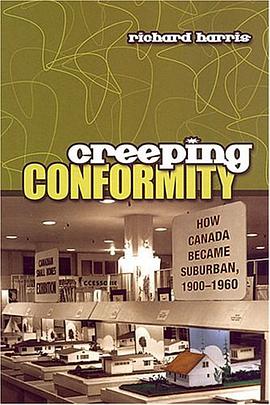

Creeping Conformity, the first history of suburbanization in Canada, provides a geographical perspective - both physical and social - on Canada's suburban past. Shaped by internal and external migration, decentralization of employment, and increased use of the streetcar and then the automobile, the rise of the suburb held great social promise, reflecting the aspirations of Canadian families for more domestic space and home ownership.After 1945 however, the suburbs became stereotyped as generic, physically standardized, and socially conformist places. By 1960, they had grown further away - physically and culturally - from their respective parent cities, and brought unanticipated social and environmental consequences. Government intervention also played a key role, encouraging mortgage indebtedness, amortization, and building and subdivision regulations to become the suburban norm. Suburban homes became less affordable and more standardized, and for the first time, Canadian commentators began to speak disdainfully of 'the suburbs,' or simply 'suburbia.' Creeping Conformity traces how these perceptions emerged to reflect a new suburban reality.
具体描述
读后感
评分
评分
评分
评分
用户评价
相关图书
本站所有内容均为互联网搜索引擎提供的公开搜索信息,本站不存储任何数据与内容,任何内容与数据均与本站无关,如有需要请联系相关搜索引擎包括但不限于百度,google,bing,sogou 等
© 2025 book.wenda123.org All Rights Reserved. 图书目录大全 版权所有




















